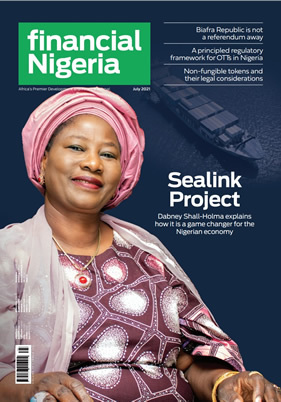Latest News
News analysis: The US-China trade war, was it all just a bad dream?

News Highlight
A rollback of tariffs and truce in the US-China trade conflict ignited a fierce risk rally yesterday, as havens slumped, ahead of the latest US CPI figures due today.
40-odd days since ‘Liberation Day’, we’re (almost) back where we started in terms of tariffs, and in the market’s mind, all is right with the world once more.
I allude, of course, to the conclusions from the weekend US-China trade talks, in Geneva. I’m happy to admit that these discussions resulted in a much more significant, and more positive outcome, than I’d been expecting.
This outcome saw China cut tariffs on US imports to 10% (from 125%), and the US cut tariffs on Chinese imports to 30% (from 145%), effective 14th May, and thus removing the trade embargo that was, for all intents and purposes, in place between the two countries. The discrepancy, incidentally, stems from the US maintaining a 20% tariff on Chinese imports, ostensibly in relation to the supply of fentanyl entering the US. In any case, once the aforementioned tariff reductions have taken place, a ‘mechanism’ will be established to allow trade, and economic talks to continue.
Initially, these tariffs rollbacks will be in place for 90 days. Practically, though, they will probably be in place for the foreseeable future, with both sides, though especially the US, having shown that they’re unable and/or unwilling to stomach the economic pain that such huge tariffs would inflict.
Stepping back, there are two obvious broader takeaways from this saga:
• The US has gone from negligible tariffs on China, to 10%, then 20%, then 54%, then 104%, then 145%...now we’re back at 30% for 90 days, and that’s supposedly a ‘win’, despite no concessions having been extracted from China. Beijing have successfully called Trump’s bluff, probably not for the last time.
• The damage that tariffs have already inflicted on the US economy is unknown, and unclear, whether this be in the form of potential supply chain disruptions, pre-emptive job cuts, price increases, or the hit to corporate earnings from firms having absorbed increased costs. Again, this will all only become clear in the fullness of time, though yet another round of tariff changes will make an already murky macro backdrop yet messier still, particularly considering that 30% is still a very punchy levy to be paying.
That brings me on to an important point. While yesterday’s news flow was clearly a net positive, it does yet again speak to the volatile and chaotic nature by which policy continues to be made in the US – the very thing that has been eroding the credibility of its institutions, and haven value of its assets, in recent weeks. Such erratic decision making will likely, once the knee-jerk rally subsides, encourage investors to continue to trim their exposures to the US.
In any case, that’s a matter for another day, with yesterday being a day where participants threw caution to the wind, ploughed back into equities in size, and unwound bets on safe havens. As such, the S&P rallied almost 3%, Treasuries sold off led by the front-end of a flatter curve, the dollar vaulted higher against all major peers, and gold notched its worst daily decline since last November.
Taking all of that into account, it’s time for me to tear up the playbook I’ve had in place for a while now. There’s no point in being married to a view in this game, when the facts change, we’ve got to be nimble and agile enough to change as well.
In light of that:
• It’s time to turn bullish equities once more, with spoos reclaiming the 200-day moving average, and considerably more favourable fundamental backdrop, permitting a shift into a ‘buy the dip’ mindset vs. the ‘sell the rip’ strategy I’d been preferring. The short-term path of least resistance should lead to the upside, helped along by relatively light long positioning, and forced buyers now needing to step in amid the lower vol/higher price environment. With a bit of luck, assuming that trade and tariff news flow remains positive in nature, focus should now be able to pivot back to the tax-cutting, de-regulation, DOGE agenda, further supporting the bull case.
• Being long of the USD is also looking attractive once more, as an alleviation of tariff-related uncertainty permits a further rebound in the beleaguered greenback, particularly if incoming data continues to hold up ok, and if focus switches to other parts of the Trump agenda as mentioned above. The DXY will need to clear the 50-day moving average at the 102 handle in order to build on a more convincing rebound, and there may be headwinds from a potential lack of foreign participation in any equity upside, but things are at least looking a fair bit brighter than they did a week or so ago. Naturally, if risk appetite remains solid, the JPY & CHF will probably bear the brunt of any USD strength across G10.
• In the Treasury complex, benchmarks are likely to continue to come under pressure at the front-end as dovish Fed bets continue to be pared back, amid reduced downside growth risks, while a re-anchoring of inflation expectations should see the long-end find some demand, in turn seeing the curve flatten, unwinding much of the move seen over the last few weeks.
• Finally, gold longs might be starting to get a little concerned, especially with the yellow metal knocked 3-odd% lower yesterday. I’m not especially worried my ongoing bullish stance here, however, with this latest tariff episode, and the US’ ongoing rhetoric around a ‘decoupling’ from China, likely to only strengthen the case for EM central banks, and associated institutions, to continue with purchases of bullion, as they continue to seek to diversify reserves. I’d get a little more worried if we break under the 50-day MA, but there’s still $100 to the downside before we have to worry about that.
Look Ahead: While trade developments, and President Trump’s trip to the Middle East, will be the main focuses today, the data docket is nonetheless a busy one.
The highlight will undoubtedly be last month’s US CPI figures, though both headline and core prices are seen holding steady at 2.4% YoY and 2.8% YoY respectively. It’s tough to say how much markets will care about these figures, after yesterday’s China tariff rollbacks, though the data certainly won’t shift the FOMC out of its ‘wait and see’ stance.
Elsewhere, this morning brings the latest employment figures from the UK, which will likely point to unemployment having ticked higher to 4.5% in the three months to March. However, given the ongoing shambles that is the ONS, the data isn’t really worth the paper it’s written on, and can probably be safely ignored.
Rounding things out, the latest set of German economic sentiment surveys are due from the ZEW institute, while plenty of central bank speakers are due to make remarks, most notably BoE Governor Bailey.
Michael Brown is Senior Research Strategist at Pepperstone
Related News
Latest Blogs
- Prospects of port community system in Nigeria’s maritime sector
- Constitutionalism must anchor discipline in Nigerian Armed Forces
- Can Tinubu’s reform deliver shared economic prosperity?
- How coup baiting is toxic for the economy
- Historicising Nigeria’s persistent economic failures
Most Popular News
- NDIC pledges support towards financial system stability
- Artificial intelligence can help to reduce youth unemployment in Africa – ...
- Lagride launches minibus service to disrupt Korope in Lagos
- Foundation calls for urgent actions to tackle fake drugs and alcohol
- Ventures Platform secures $64 million for seed funding
- We are better positioned to prosecute suspects in bank failures - NDIC Boss






